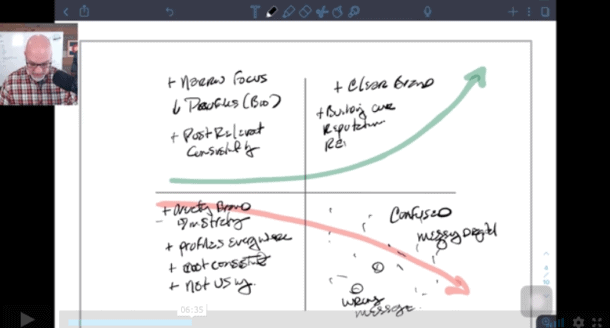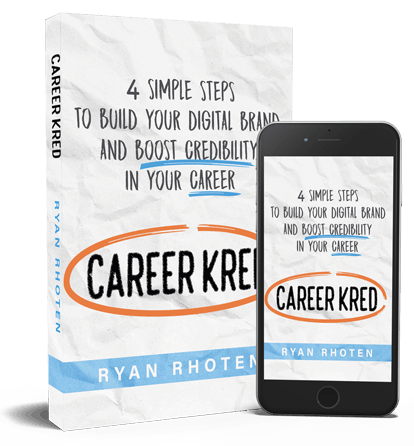
Over the course of this year, I’ve read several books. A number of them in preparation for guest interviews, others because I want to strengthen my knowledge of personal branding and online reputation management.
I always take something away from every book I read. Some books provide more insight than others; at times, some books spark thoughts about something you’ve previously read which causes you to look at the book in a new light.
On the other hand, it’s also possible you’ve not yet reached a point where your experiences enable you to fully comprehend what the author is trying to tell you.
Maria Duron and I discussed this specifically during our chat on the podcast.
In Claudia Altucher’s book, Become an Idea Machine, (Affiliate link) she refers to the merging of two or more concepts into a different or new idea as idea sex.
This post happens to be the results of idea sex and has led me to discover what I call The Long Tail employee.
THE LONG TAIL ECONOMY
I read The Long Tail (affiliate link) by Chris Anderson about a year ago. At the time, I read it as intended, a business book about how the internet was creating a demand for items in the long tail of the supply chain demand curve.
These items would have been considered custom items by big companies and if you, as a consumer, could get your hands on one of these items, you were most likely going to pay a premium.
The internet was changing this premise and essentially creating a new economy of specialized or niche products. It’s not that the products didn’t exist before, they did, they were just difficult to obtain because shelf space in a retail store comes with a price tag.
This price tag caused companies to only load their shelves up with products they knew would sell and have high “turns”. A turn is the business way of saying the product would sell and need to be restocked more often.
Companies would never have considered stocking a shelf with a product that only sold a few times a year. In statistical terms, these items were considered members of the long tail.
Then the internet came (read as Amazon) and changed everything.
With the creation of “virtual shelves”, companies could now stock and provide these specialized or niche products at a much more reasonable cost. This allowed them to grow not only their revenues but their customer base as well.
The internet created a market for the niches and our world has never been the same since.
THE JOB SEARCH PROCESS
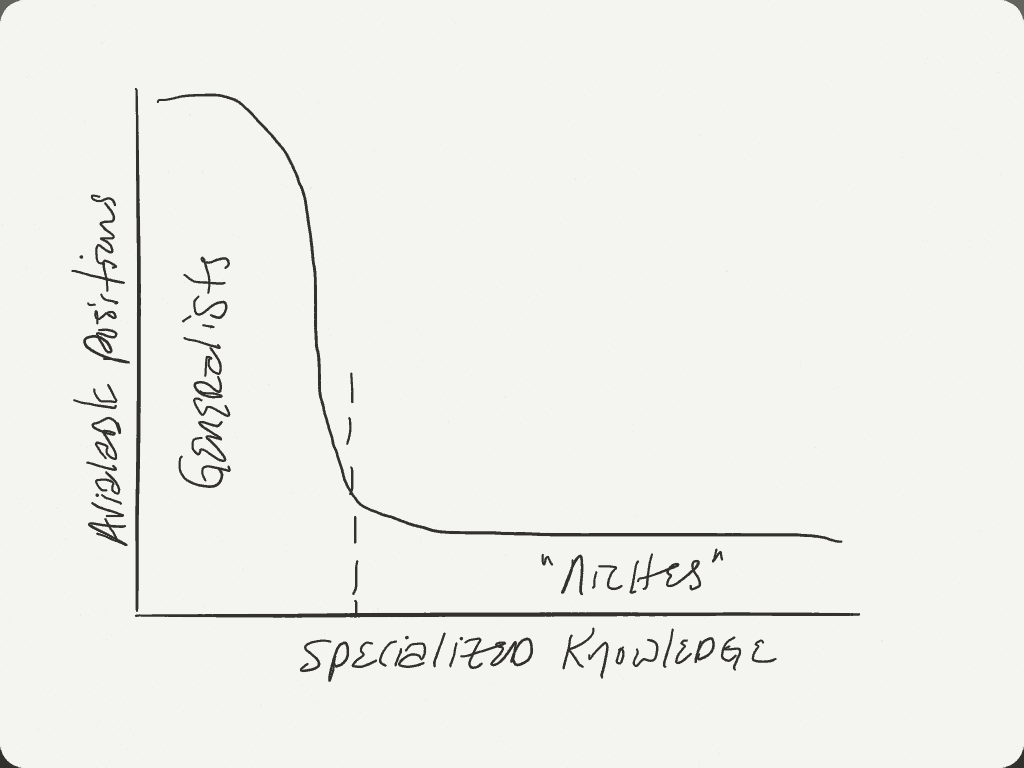
Like markets for products, the job search process was once limited to your location. If you wanted a job, you went to the local stores or manufacturers. You filled out an application and submitted a resume.
Based on the information you provided in the application and the strength of your resume, you might be granted an interview or maybe even be hired on the spot depending on the need of the company.
Job postings were mainly in local papers, so to find work, you needed to scan the paper each week. I’m dating myself here but I remember doing this.
Once you found a job you were interested in, you followed the same tried and true process of submitting a resume and eventually filling out a job application.
This was largely a local act. The radius of jobs available was limited by newspapers distribution. That’s not to say there weren’t other jobs out there, but why would a company pay for paper “shelf space” in a city miles away in order to attract job seekers?
Like products on a shelf, it didn’t make sense to advertise your open positions too far from your base of operations. The best candidates may very well have been miles away but the costs to recruit the employee in the long tail would have been too costly.
From the employee perspective, like the customer at the store, their choice of jobs was limited to what the papers decided to put on their “shelves”.
Then the internet came and created job boards such as Monster.com.
Suddenly, the list of jobs available to the job seeker was dramatically expanded. Jobs previously limited to the long tail of the jobs distribution chart were now accessible to anyone with an internet connection.
This was great for the job seeker and companies alike. Both now had access to positions and talent in a way never before possible.
The job search process expanded to include the long tail of the demand curve.
THE BIRTH OF THE APPLICANT TRACKING SYSTEM
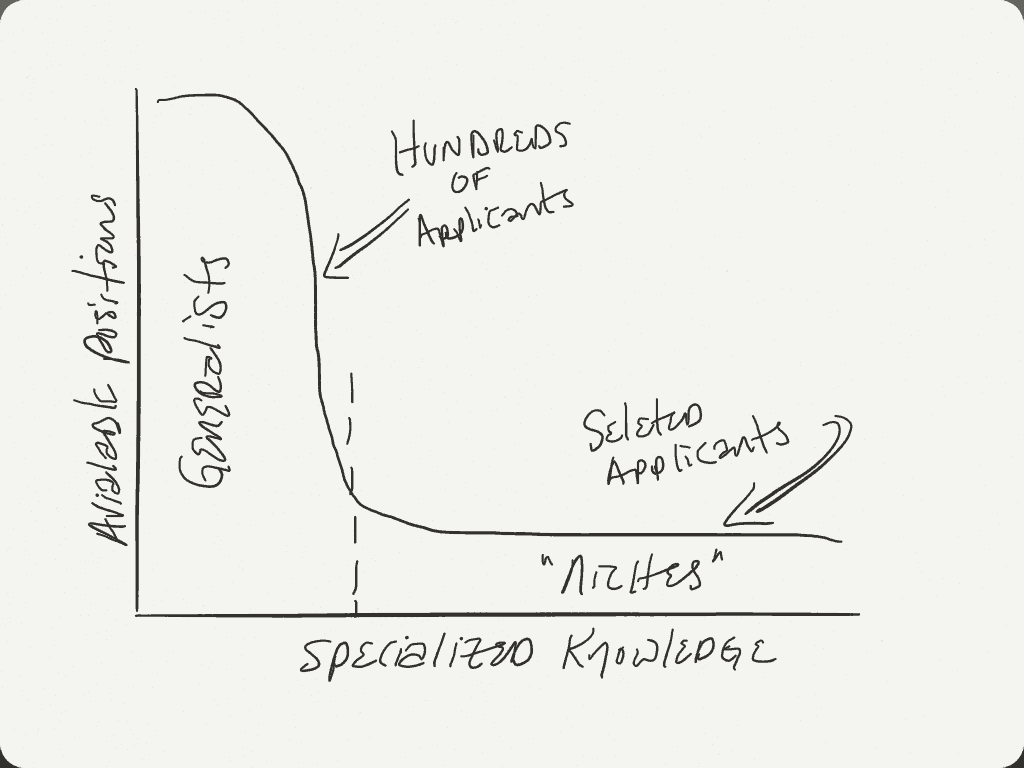
The “new” internet job search process hummed along with the economy and was a boon to the recruitment industry. Recruiters were now able to find those perfect candidates previously hidden in the long tail.
The internet provided efficiencies in every aspect of the job search, especially the ability of potential candidates from all over to apply for open positions.
This, of course, created an unforeseen issue within HR departments across the world as they now had to deal with hundreds, if not thousands, of applications for a single job opening.
In order to combat this barrage of resumes, the new internet job search economy gave birth to the dreaded applicant tracking systems (ATS) that are so prevalent today.
The ATS didn’t change the overall process, candidates still had to submit a resume, it simply made HR’s job of sorting through the “Good vs Bad” resumes much easier.
Today, because of the screening done by the ATS it’s highly possible the best candidates are being left behind because they didn’t use enough keywords on their resume thus their resume hit the “bad” pile.
The vast majority of the positions using the ATS as the initial screener are the ones at the head of the demand curve. These positions are more plentiful and are in many ways the commoditized standard positions found at every company.
The other jobs, the more specialized niche ones further out on the long tail, in many cases, are not even posted. For these more specialized positions, employers typically hire the services of external recruiters or even use word of mouth to find the right candidate.
These are the positions of the long tail employees.
THE RISE OF THE LONG TAIL EMPLOYEE
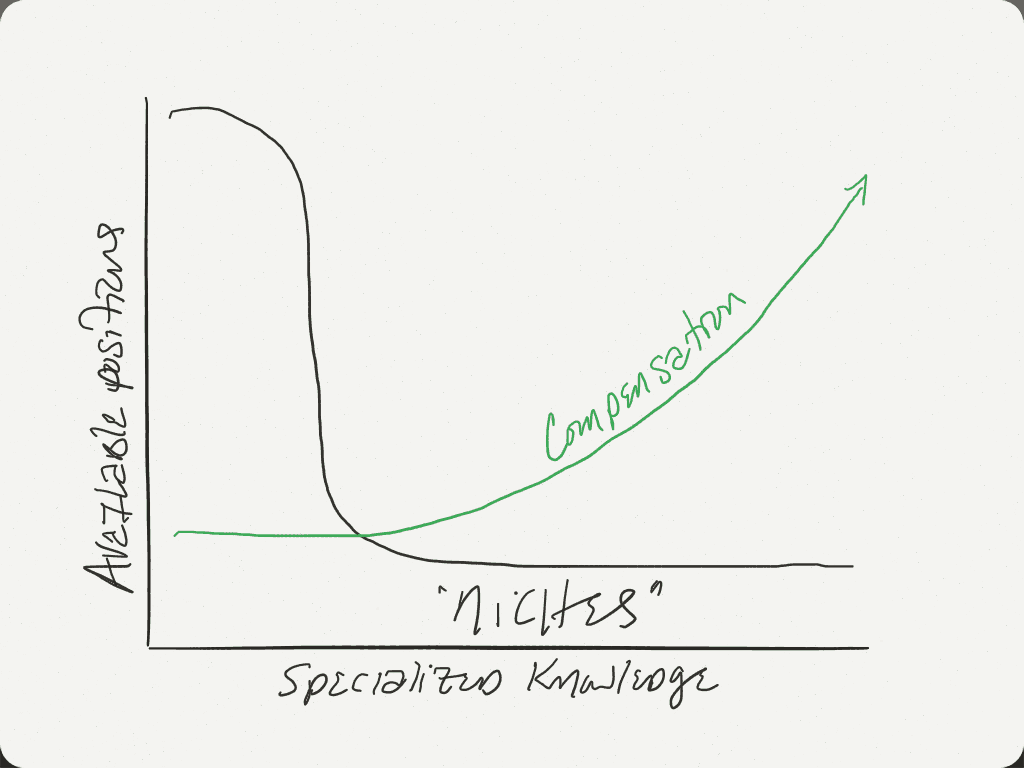
For positions at the head of the demand curve, the job search process largely remains the same. This means as a job seeker, you are competing against a large number of other applicants (think hundreds if not thousands) for the same position.
The competition is less in the long tail and because of the internet, the company’s acquisition cost has decreased over the last several years.
These long tail positions may or may not even be advertised. As a natural result, the candidate pool is much smaller. Because the talent pool is smaller, savvy HR managers have begun to comb the internet looking for the perfect hire themselves.
They review social media accounts, websites, blog posts, and even comments on Q&A sites like Quora.
Some recruiters have become so good at the long tail employee job search they have created a new industry commonly referred to as social media recruitment.
Unlike their “untailed” counterparts, the long tail employee recognizes the employment landscape has changed and thus has adapted their approach to the job search process.
They are aware of social media recruitment and as a result, they use it to their advantage.
The long tail employee is tech savvy. They employ websites and social media in a manner to position themselves as an expert or thought leader in their area of expertise or niche within the long tail.
In other words, they are using the internet to their advantage and positioning themselves as the Google of their niche.
This allows their name to surface when the social media recruiters are searching for certain keywords related to their open positions.
The long tail employee has figured out how to merge their personal brand with their online reputation in a manner that will get them be found for their ideal position.
These employees know and understand the importance of a good online reputation and how critical it is to look good to potential employers even while they sleep.
SUMMARY
I’m still vetting out the long tail employee in my mind. This is my first attempt to extract my thoughts on the topic.
Since I don’t have Dumbledore’s pensive to place my thoughts in and look for the patterns, I’m using this blog as my pensive to allow the long tail employee to be viewed and commented on by others such as yourself.
My thoughts on the long tail employee are a combination of ideas born from guests on the podcast, books I’m reading and my journey with personal branding and online reputation management.
The Long Tail Employee is a result of idea sex as I alluded to at the beginning.
I do believe the long tail employee is real and I also believe the higher paying jobs in the future will go to those who are positioned as thought leaders or experts in their field or niche.
This is especially true as we approach The End of Jobs (affiliate link) as defined by Taylor Pearson which is a great book I recommend you read.
